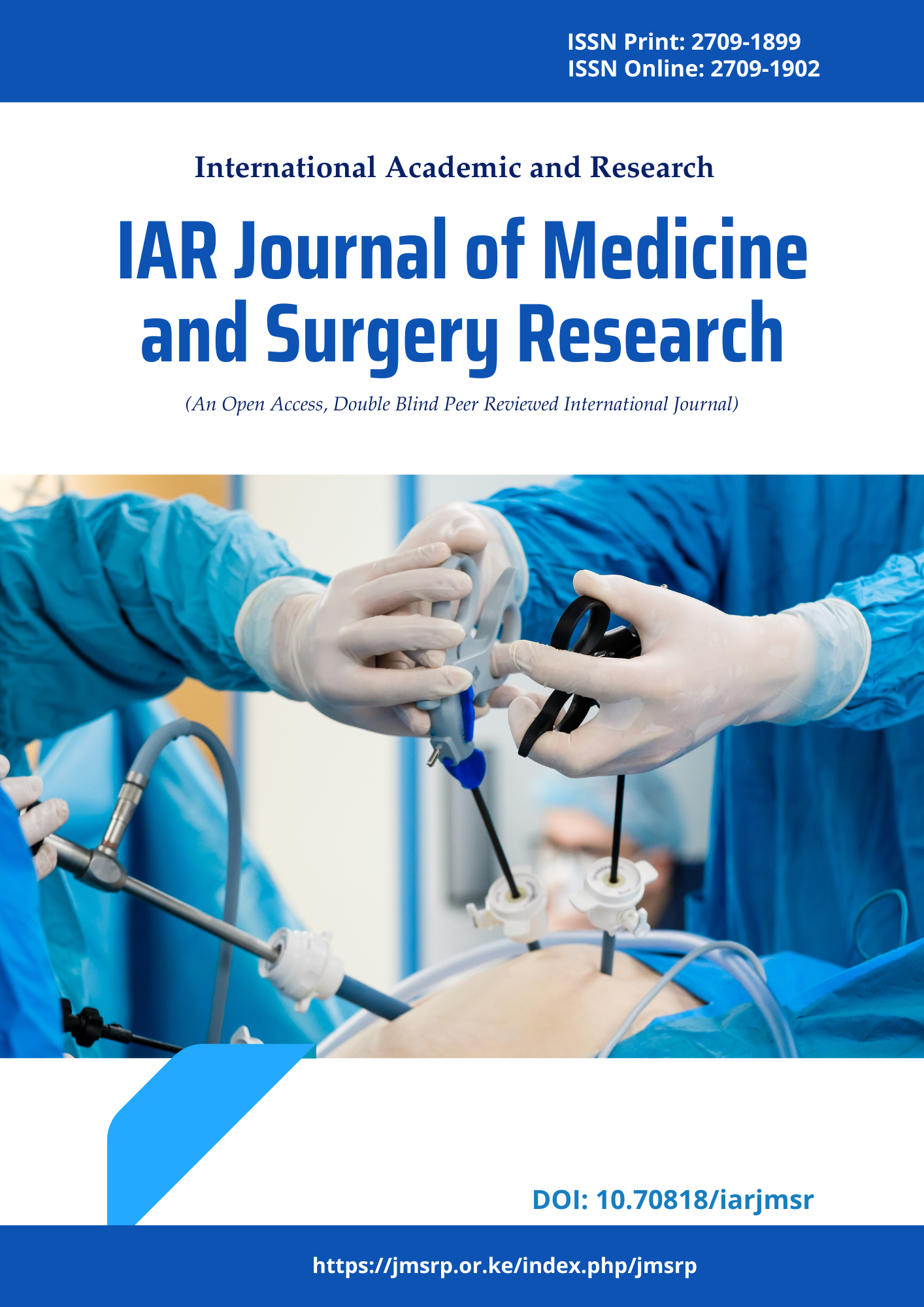Regional Anaesthesia Techniques for Orthopaedic Surgery atTertiary Care Teaching Hospital
DOI:
https://doi.org/10.47310/iarjmsr.2024.V05i01.02Keywords:
Regional Anaesthesia, Orthopaedic Surgery, American Society of AnaesthesiologisAbstract
Background: Regional anaesthesia has found its uses in many aspects of orthopaedic surgery including more recently, spine surgery. Neuraxial or regional anaesthesia are often the preferred techniques for surgical anaesthesia in patients with multiple comorbidities. For instance, osteoporosis-related complications such as hip fractures are common in the growing geriatric population. Orthopaedic surgery aims to recover functional capacity in patients but it carries a specific morbidity and mortality. Orthopaedic surgery conveys several challenges for the anaesthesiologist, including prevention of thromboembolic complications, reduction of peri- and postoperative bleeding and management of autologus blood transfusion and postoperative pain. Material and Methods: This is a prospective study was conducted in the Department of orthopaedic and Anaesthesia at Shadan Institute of Medical Sciences, Teaching Hospital and Research Center. Three hundred and ten consecutive cases posted for orthopaedic surgeries were taken up for study. Anaesthesia technique was decided based on the nature of surgery, willingness and medical status of the patient and experience of the anaesthesiologists. RA was planned whenever possible. In the morning of operation the RA technique was explained to the patients and intravenous (IV) access established. Preoperative medication was given using IV fentanyl and midazolam in titrated doses. Ketamine was used in children and appropriate block given using standard technique. Nerve stimulator was used wherever applicable Results: Age of the patients ranged from three months to 92 years. Maximum number of patients belonged to the age group of 21- 50 years (63.2%). As per the demographic data. In our study, Knee arthroscopy and repair was 28.38%, Femoral was 17.41%, Radius and ulna was 15.16% and least were Ankle and foot, Wrist and hand surgery was 1.93%. In our study Subarachnoid block was 40.96% followed by Combined spinalepidural 17.09%, General anaesthesia 12.90%. Conclusion: In a conclusion, the use of regional anesthesia techniques for postoperative outcomes in orthopedic surgeries has been investigated in lots of clinical studies and case reports. Most of the authors proposed that regional anesthesia in orthopedic patients may be associated with better postoperative pain control and a reduction in intraoperative blood loss when compared with general anesthesia. In the future regional anesthesia techniques will be more preferable anesthetic technique in orthopedic surgeries
















